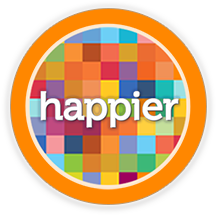I spent yesterday morning having pancakes at my old Junior High School, McClure in Western Springs, IL. I walked the halls that I was able to, entered through a new expansion of the school, looked at the theater area where I got my first concussion, and ate pancakes in the cafeteria where as a 7th and 8th grader I tried to learn not only how to grow academically but to survive socially those weird years known as junior high school. I also came across the sign above the door to the south end of the school that immortalized our Principal Mr. Johnson who retired following my 8th grade year, "Have a Good Day and Pass it on".
Every morning for two years I heard that message at the end of our morning announcements, and I like to believe that hearing it motivated us to do that and helped us all to have a better school environment. It is also one of the few reminders of my junior high years that has survived to future generations, the records that were set by my classmates, the trophies we won, and the achievements we had were not visible anywhere that I looked in the school, but this great reminder of how to live carried on and continues to motivate those who were influenced by it to do as we were instructed so long ago.
While waiting for my family to wake up so we could go eat pancakes, I spent some time reading John List and Uri Gneezy's The Why Axis: Hidden Motives and the Undiscovered Economics of Everyday Life which brought me back to another part of my life, thinking like an economist.
As an Econ teacher I fell in love with the idea of thinking like an economist particularly the idea that people respond predictably to incentives and that they make rationale decisions to improve their lives with the choices they make. Unfortunately, school administration has shown me that many of my students are not rational actors.
In learning and thinking about Economics, I have been particularly enthralled with the work of Steven Levitt and his Freakonomics Blog which has been featuring the work of Mr. List and Mr. Gneezy in small article since the release of the book. One of those articles, and two chapters in the book, deal with field experiments in education in the Chicago Heights School District.
During these experiments students were paid for improving their grades and attendance. Each month students who met their educational goals would receive $50 and be entered into a lottery for a ride home in a Hummer Limo. After one year of doing this with freshman students, they found that the grades of students on the border of failing and dropping out of school could be impacted.
In a second experiment students were given $20 prior to taking a standardized test. They were told that if they could beat their score from the previous spring, then they would be able to keep the money at the end of the testing period, but if they did not improve, they would have to give the money back. Students were given a $20 bill that they could see during the test, and were asked to sign a receipt acknowledging that they had received the money. They then were able to find out at the end of the hour, if they had passed and could keep the money, or if they would have to give it back. They also had a treatment where the students, if they met their goals, received the money after the test only, where they received the money a month after the test was over, or where they received a $3 trophy. In all cases student achievement improved over the previous years tests. Overall they saw gains of 5-10 percentage points on a 100 point scale.
This lead them to conduct experiments with incentives for teachers, parents, tutors, and to design a pre-school program within which to conduct experiments with young learners before bad habits, lack of growth, and the jadedness of being a 14 year old set in. In all of these cases, the experiments showed growth. The lasting part of this reading though came at the end of the Chapters on these experiments where the authors wrote:
We must all realize that our public schools are not just knowledge-pumping (or, at worst, babysitting) institutions dedicated to teaching our children how to learn how to become functional citizens. In reality, they are laboratories of learning for everyone researchers, parents, teachers, administration, and students too. Just imagine how much we could all discover if more people began running and participating in field experiments to discover what works."-The Why Axis: Hidden Motives and the Undiscovered Economics of Everyday Life page 106-107This has me wondering what incentives can we put in place at PHS. How can I experiment with incentives and our most troublesome students when it comes to attendance? What would schools that are systemic in pursuing excellence in education look like if scientific method became the basis for our innovation, as opposed to marketing campaigns from education companies? What new insights might we discover that will push our students to greater heights? How might we, like Mr. Johnson, make our schools and world a better place?






